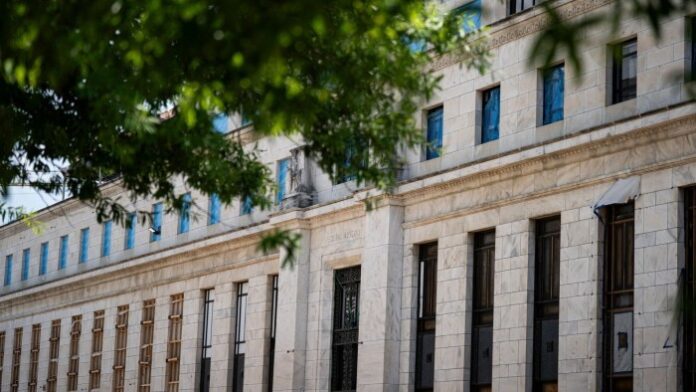Unlock the Editor’s Digest for free
Roula Khalaf, Editor of the FT, selects her favourite stories in this weekly newsletter.
The biggest US banks have all passed the Federal Reserve’s annual tests of whether they can withstand a future economic and market crisis, prompting analysts to predict a sharp increase in dividends and share buybacks.
The Fed said on Friday that under its “severely adverse” scenario, in which unemployment surges to 10 per cent, the 22 banks, including JPMorgan Chase, Goldman Sachs and Bank of America, would lose more than $550bn.
However, they would suffer a much smaller hit to capital than in recent years and remain well within required regulatory standards.
The theoretical recession used by the Fed to test banks’ resilience was less severe than the previous year’s. While the scenario was designed before President Donald Trump’s return to office, it comes at a time when his administration is pushing to soften financial regulations.
“Large banks remain well capitalised and resilient to a range of severe outcomes,” said Michelle Bowman, the Fed’s vice-chair for supervision.
The results of the Fed’s “stress tests” will be used to calculate the minimum level of capital that banks need relative to their risk-adjusted assets, providing a critical buffer to absorb losses.
Jason Goldberg, analyst at Barclays, forecast on the basis of this year’s results that Goldman Sachs would be the biggest winner among the leading US lenders as its minimum capital level would drop from 13.7 per cent to 10.7 per cent. Wells Fargo, M&T Bank and Morgan Stanley would also have their capital requirements cut by 1 percentage point, he predicted.
He added that this was likely to raise the amount of excess capital that most banks seek to return to shareholders via dividends and share buybacks. “We expect share repurchase (in dollars) to increase 12 per cent at [the] median bank relative to the prior year’s exam, with most banks stable to higher,” he said.
Banks are optimistic that the tests will become even more accommodating after the Fed responded to a legal challenge by the main banking lobby group with a promise to overhaul the exercise. The central bank said earlier this year it planned to make the exercise more transparent and to average the test results over the past two years to reduce volatility.
The banks are required to wait until Tuesday to provide an update on what they expect their new capital requirement to be. They frequently lay out plans for dividends and share buybacks after the Fed stress tests.
The Fed said this year’s stress tests would push banks’ aggregate tier one capital ratio, their main cushion against losses, down by 1.8 percentage points — a smaller drop than in recent years and well below the 2.8- percentage-point fall in last year’s exercise.
But the Fed said it expected to calculate banks’ capital requirements on the basis of its two-year averaging proposal, providing that was finalised in the coming weeks. This will increase the capital hit to 2.3 per cent. Bowman said the change was preferable “to address the excessive volatility in the stress test results and corresponding capital requirements”.
The lender with the biggest fall in its capital due to the theoretical stress was Deutsche Bank’s US operation, which had a hypothetical decline of more than 12 percentage points, based on the averaged results of the past two tests. The next largest falls were at the US subsidiaries of Switzerland’s UBS and Canada’s RBC. But they all remained more than double the 4.5 per cent minimum level through the exam.
In this year’s “severely adverse” scenario, US GDP declined 7.8 per cent in a year, unemployment rose 5.9 percentage points to 10 per cent and inflation slowed to 1.3 per cent. House prices fell 33 per cent and commercial property prices dropped 30 per cent.
While this would be one of the most extreme recessions in history, it is milder than the one drawn up by the Fed last year. The theoretical market crash — with share prices falling 50 per cent and high-yield bonds selling off sharply — was also less severe than in last year’s exercise.
The Fed said banks benefited from their higher profitability. It added that it had included lower hypothetical losses from private equity after “adjusting how these exposures are measured to better align with these exposures’ characteristics”.
Under pressure from Trump to ease the regulatory burden in support of growth and investment, the Fed has announced plans to rework many of its rules for banks.
This week, the Fed and the two other main banking watchdogs announced plans to slash the enhanced supplementary leverage ratio, which sets how much capital the biggest banks need to have against their total assets.


